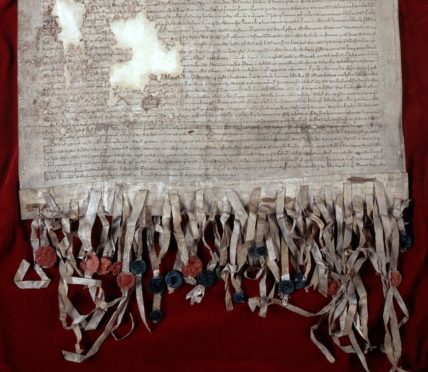
One of Scotland’s most significant documents is to go on display next year – 700 years since its creation.
The Declaration of Arbroath will be displayed at the National Museum of Scotland in Edinburgh from 27 March to 26 April 2020.
The document has not been on public display for 15 years, when it was last displayed at the Scottish Parliament.
The Declaration of Arbroath is one of Scotland’s most important historical documents, capturing a powerful call for the recognition of the Kingdom of Scotland’s sovereign independence.
The Declaration is a letter dated 6 April 1320, written by the barons and freeholders of Scotland, on behalf of the Kingdom of Scotland, to Pope John XXII asking him to recognise Scotland’s independence and acknowledge Robert the Bruce as the country’s lawful king.
The iconic and fragile 700 year old document, which is cared for and preserved for future generations by National Records of Scotland, can only be occasionally displayed in order to ensure its long-term preservation.
The Declaration was probably drawn up in the scriptorium of Arbroath Abbey. Written in Latin, it was sealed by eight earls and about forty barons. It was authenticated by seals, as documents at that time were not signed. Only 19 seals now remain.
Alice Blackwell, Curator of Medieval Archaeology and History at National Museums Scotland said: “We are delighted to have the opportunity to display the Declaration of Arbroath here at the National Museum of Scotland.
“It is a hugely significant document and a vital piece of Scotland’s history. We look forward to welcoming many visitors next year to enjoy the rare opportunity of seeing this iconic document close up.”
Paul Lowe, Chief Executive of National Records of Scotland, said: “National Records of Scotland is delighted to help display this famous and fragile document for Scots and for visitors from further afield.
“The Declaration of Arbroath is a key treasure in our extensive collections and we’re very proud of the role we play in conserving this hugely significant historical artefact for future generations.”
#DeclarationofArbroath

Enjoy the convenience of having The Sunday Post delivered as a digital ePaper straight to your smartphone, tablet or computer.
Subscribe for only £5.49 a month and enjoy all the benefits of the printed paper as a digital replica.
Subscribe